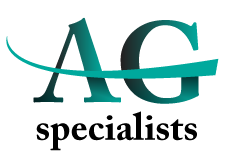Dysphagia
I was recently diagnosed with dysphagia. What does that mean?
Dysphagia means difficulty swallowing. Often people complain that food “gets stuck” in the throat and this leads to a diagnosis of dysphagia.
Swallowing is a complex process that involves over 50 pairs of muscles and many nerves. Food is moved from the mouth to the stomach in three stages. In the first stage, food is prepared for swallowing as it is moved around the mouth by the tongue. The second stage begins when the tongue pushes food or liquid to the back of the mouth. The third stage begins when food or liquid enters enters the esophagus. Dyphagia can occur in any of theses three stages.
What causes dysphagia?
Some people are born with swallowing problems but in many cases they develop as a result of a physical illness or medical condition. There are many causes of dysphagia, including stroke, Parkinson’s disease, Multiple Sclerosis, and other neurological disorders. Muscular disorders (such as myasthenia gravis or muscular dystrophy) may also be responsible. Cancers of the head, neck, and mouth and/or cancer treatment may be a cause of dysphagia.
Why should I be concerned about dysphagia?
In some people, dysphagia can be serious. If you are unable to get enough food and fluids to say healthy because you can’t swallow, weight loss or nutritional problems can result. In the worst cases, dysphagia can result in aspiration pneumonia. This occurs when food enters the lungs instead of the esophagus, causing bacterial infection, pneumonia, and occasionally death.
How is dysphagia treated?
Speech and language pathologists are skilled at using medical tests to determine the scope and severity of dysphagia. In some cases dysphagia can be treated with surgery or medication. In others, treatment might involve muscle exercises or using special eating techniques. Some patients must change the texture of the foods and fluids they eat to make swallowing easier. When dypshagia is severe, eating and drinking orally is not recommended. In these cases, providing nutrition via a feeding tube is recommended.
A speech and language pathologist can determine what course of treatment is best for you.
What types of fluid modifications are recommended for dysphagia treatment?
Sometimes when a person has dysphagia, liquids must be thickened to make swallowing them easier. Liquids can be thickened to the consistency of honey, nectar (such as apricot nectar), or pudding. If thickened liquids are recommended, every liquid consumed (including water, coffee, juices, and milk) must be of the recommended consistency.
How are liquids thickened?
Speech and language pathologists recommend using commercial thickener, which is a powder that is mixed into beverages to thicken them. Many healthcare facilities purchase pre-thickened water, milk, coffee, and juice to take the guesswork out of thickening fluids. For home use, thickening powder is available in drug stores.
What types of texture modifications are recommended for foods?
The National Dysphagia Diet recommends three levels: dysphagia pureed, dysphagia mechanically altered, and dysphagia Advanced. Dysphagia pureed consists of foods that are pureed and homogenous. All foods, including meats, vegetables, and breads must be pudding-like consistency for the dysphagia pureed diet. The dysphagia mechanically altered diet allows foods that are moist, soft-textured, and easily formed into a food bolus for swallowing. For this level of the dysphagia diet, foods should be well-cooked and soft and meats should be ground or minced. The dysphagia advanced diet consists of foods of nearly regular textures but eliminates very hard, sticky, or crunchy foods.
A registered dietitian or speech and language pathologist can give you specific information about what foods are allowed on each diet.
References
National Institute on Deafness and other Communication Disorders. Dysphagia. Available at http://www.nidcd.nih.gov/health/voice/dysph.asp. Accessed March, 2007.
National Institute of Neurological Disorders and Stroke. NINDS Information page. Accessed March, 2007.
National Dysphagia Diet: Standardization for Optimal Care. Chicago, IL: The American Dietetic Association, 2002.

